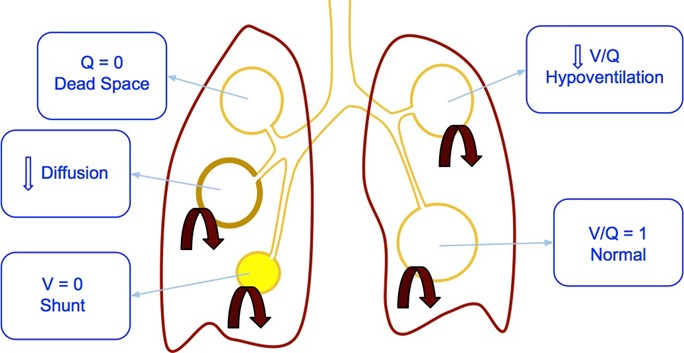A nurse in an emergency room is caring for a client who sustained partial-thickness burns to both lower legs, chest, face, and both forearms. Which of the following is the priority action the nurse should take?
Administer intravenous pain medication.
Draw blood for a complete blood cell (CBC) count.
Insert an indwelling urinary catheter.
Inspect the mouth for signs of inhalation injuries.
The Correct Answer is D
Choice A Reason: This choice is incorrect because administering intravenous pain medication is not the priority action for a client who has sustained partial-thickness burns. Pain medication may be indicated for pain relief and comfort, but it does not address the potential life-threatening complications of burns such as shock, infection, or respiratory distress.
Choice B Reason: This choice is incorrect because drawing blood for a CBC count is not the priority action for a client who has sustained partial-thickness burns. A CBC count may be useful to monitor the hematological status and detect any signs of infection or anemia, but it does not address the immediate needs of the client
Choice C Reason: This choice is incorrect because inserting an indwelling urinary catheter is not the priority action for a client who has sustained partial-thickness burns. A urinary catheter may be necessary to measure the urine output and assess the renal function and fluid balance, but it does not address the most urgent problem of the client.
Choice D Reason: This choice is correct because inspecting the mouth for signs of inhalation injuries is the priority action for a client who has sustained partial-thickness burns. Inhalation injuries are caused by inhaling hot air, smoke, or toxic gases that damage the airway and lungs. They can cause airway obstruction, bronchospasm, pulmonary edema, or respiratory failure. Therefore, the nurse should inspect the mouth for signs such as soot, singed nasal hairs, burns on the lips or tongue, hoarseness, stridor, or wheezes. The nurse should also monitor the oxygen saturation and arterial blood gases to assess the oxygenation and ventilation status of the client.
Nursing Test Bank
Naxlex Comprehensive Predictor Exams
Related Questions
Correct Answer is ["B","D","E"]
Explanation
Choice A Reason: This choice is incorrect because headache is not a common manifestation of ARF. Headache may be caused by various factors such as dehydration, stress, sinusitis, or migraine, but it does not indicate ARF.
Choice B Reason: This choice is correct because severe dyspnea is a common manifestation of ARF. Dyspnea is a difficulty or discomfort in breathing that affects the oxygen delivery and carbon dioxide removal from the body. It may be caused by various factors such as lung disease, heart disease, anemia, or anxiety, but it indicates ARF when it is severe and persistent.
Choice C Reason: This choice is incorrect because nausea is not a common manifestation of ARF. Nausea is a sensation of uneasiness or discomfort in the stomach that may precede vomiting. It may be caused by various factors such as food poisoning, motion sickness, medication side effects, or pregnancy, but it does not indicate ARF.
Choice D Reason: This choice is correct because hypotension is a common manifestation of ARF. Hypotension is a condition in which the blood pressure is lower than normal (less than 90/60 mm Hg). It may be caused by various factors such as dehydration, blood loss, sepsis, or shock, but it indicates ARF when it is due to reduced cardiac output or vasodilation from hypoxia.
Choice E Reason: This choice is correct because decreased level of consciousness is a common manifestation of ARF. Decreased level of consciousness is a condition in which the person has impaired awareness or responsiveness to stimuli. It may be caused by various factors such as brain injury, stroke, seizure, or drug overdose, but it indicates ARF when it is due to increased carbon dioxide levels (hypercapnia) or decreased oxygen levels (hypoxemia) in the brain.

Correct Answer is A
Explanation
Choice A Reason: Packed RBCs are indicated for clients who have hypovolemic shock due to blood loss, as they increase the oxygen-carrying capacity of the blood and restore the blood volume.
Choice B Reason: Cryoprecipitates are indicated for clients who have hemophilia or von Willebrand disease, as they contain clotting factors that help stop bleeding.
Choice C Reason: Albumin is indicated for clients who have hypovolemic shock due to fluid loss, such as from burns or ascites, as it increases the plasma oncotic pressure and draws fluid into the vascular space.
Choice D Reason: Platelets are indicated for clients who have thrombocytopenia or platelet dysfunction, as they help prevent or control bleeding.
Whether you are a student looking to ace your exams or a practicing nurse seeking to enhance your expertise , our nursing education contents will empower you with the confidence and competence to make a difference in the lives of patients and become a respected leader in the healthcare field.
Visit Naxlex, invest in your future and unlock endless possibilities with our unparalleled nursing education contents today
Report Wrong Answer on the Current Question
Do you disagree with the answer? If yes, what is your expected answer? Explain.
Kindly be descriptive with the issue you are facing.
